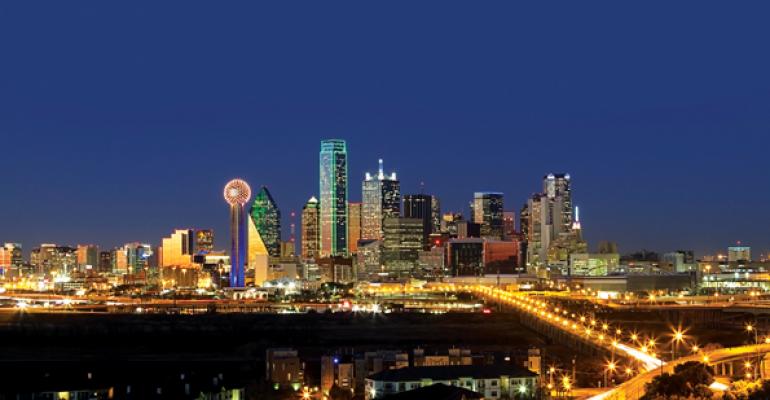MULTIMEDIA
5 prime markets for restaurant growth
RELATED
• Restaurant industry experts share growth tips
• Restaurants challenged by patchwork minimum wage rulings
• More restaurant operations news
For many restaurant chains, the challenge is not whether to grow, but where.
The cities that might be a successful landing place for one brand may not work at all for another. Selecting new markets — and sites within those markets — is a complex decision that takes into account potentially hundreds of factors. What restaurant operators look for depends on their brand and their business goals.
Growing chains today have myriad sources for data and analytics to help them evaluate the strength of any market. Still, every year certain factors emerge as common themes.
• The fast-casual segment, which is showing the most growth, tends to look for Millennials: those consumers aged 18 to 35 who favor that space between quick service and casual dining.
• For the growing number of restaurant chains offering more healthful fare, the focus may be on consumers living healthful, active lifestyles.
• A run of bad winter weather in recent years is prompting some chains to look for a bit more sunshine or at least markets less susceptible to ice storms and freezing temperatures.
• With little new shopping center development going on across the country, some chains are looking for growth in established urban centers. Those chains are developing smaller-box prototypes that fit neatly into downtown neighborhoods.
• And, of course, restaurant chains look for cities that are growing in population. A consumer base that is increasing in number typically translates to more opportunity and less risk.
NRN takes a look at five cities, each with one of the factors that makes a market particularly attractive for restaurant growth.
Millennials: Washington
(Continued from page 1)
In the growing fast-casual space, restaurant chains are fighting for the Millennials, young adults ages 18 to 35. Those consumers are everywhere, but some cities have a higher percentage than others.
Washington, for example, is a market favored by brands seeking Millennials. Fort Worth, Texas-based consumer analytics firm Buxton estimates that 250,000 people, or 35 percent of the total population in the District of Columbia, fall within that age range. And that doesn’t include the commuter suburbs of Maryland and Virginia.
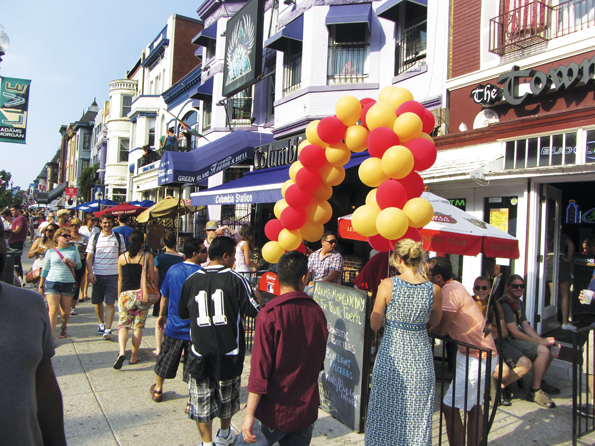
The attraction, of course, is the city’s major industry: the federal government and the political infrastructure that comes with it. The presence of several colleges and universities also helps, and Washington is a lively urban center with plenty of opportunities for apartment living.
Jeff Vickers, senior vice president of development for the 295-unit sandwich chain Which ‘Wich, based in Dallas, said Washington’s Millennials also tend to be well-educated and earn a higher income.
“The [Washington] area, including Maryland and Virginia, is a key area for that demographic,” Vickers said. “We have a couple of stores in that market now, and both are doing very well. We’re actively looking for real estate.”
Availability of real estate, however, is a problem, he said.
“Quite a few brands are growing there, and our segment in particular has always been a stable category, so we’ve got a sandwich player on every corner.”
The city is also a growing market for Chicago’s Protein Bar, which recently opened a fourth unit there, with another five to 10 sites planned. Matt Matros, founder of the 18-unit chain, agreed that the city has its challenges.
“The biggest challenge is that the government doesn’t work every day. There are furloughs and days off. It’s just an unpredictable city,” he said.
Healthy living: Denver
(Continued from page 2)
Better-for-you brands look for consumers who prefer fresh, healthful fare — and are willing to pay for it. They’re finding those diners in Denver.
Colorado has long grown its reputation for more healthful living. It has the lowest obesity rate of any state, and Denver this year was ranked the fourth “most fit” city by the American College of Sports Medicine.
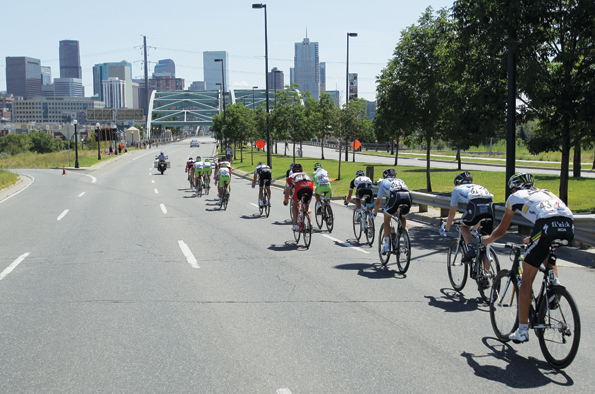
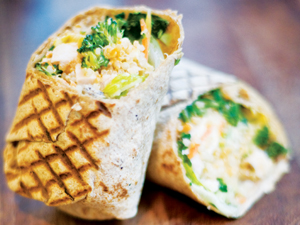
According to research by Buxton, Denver residents have a 35-percent higher propensity for healthy living compared with the national average, based on variables like regular exercise, an emphasis on diet and attitudes toward fast food.
That’s a perfect fit for brands like Protein Bar, which is known for its health-conscious menu of salads, quinoa bowls, smoothies and “Bar-ritos,” with fresh and organic ingredients wrapped in whole-grain tortillas.
“Denver is a healthy, fit, active market,” Matros said. The chain recently opened its second unit in Denver, with two more on deck. It also has a location in Boulder, Colo.
“We also liked that it’s a market where people are highly educated,” he added. “What we do requires a higher level of education. And, personally, I just love it in Denver. We think the Denver metro area will support 12 to 15 Protein Bar locations.”
Matros said customers in Denver are proving themselves to be repeat visitors.
“We’re not just seeing one or two visits a week; we’re seeing customers come four to five times per week,” he said.
Another operator, Atlanta-based Tropical Smoothie Café, has opened three restaurants in Denver since October 2013 and plans to develop another 25 over the next seven years.
Mike Rotondo, Tropical Smoothie’s chief executive, said the 380-unit, mostly franchised chain uses analytics firm Forum Analytics to evaluate the percentage of consumers looking for healthier dining options in certain markets. Generally, the chain looks for markets with at least 7 percent of such consumers, and Denver came in at 10.5 percent.
“Denver is an area we felt we could do well in,” he said. “They’re ... not just healthy, but living an active lifestyle, and those are the types of people we’re seeing more of at Tropical Smoothie.”
Indulgent brands also like Denver.
Schlotzsky’s is targeting Denver for expansion, noting that residents there also love convenient, fresh food options. The Austin, Texas-based chain has 10 units in Colorado and recently announced plans for another 15 franchise deals in Denver proper, with another 30 potential locations in the Mile-High City’s greater metro area by the end of 2014.
The new locations of the 350-plus-unit chain will be dual branded with sister chain Cinnabon. Both Schlotzsky’s and Cinnabon are owned by Atlanta-based Focus Brands Inc.
Urban centers: Chicago

(Continued from page 3)
With new shopping center development at a virtual standstill in the suburbs, many chains have begun rethinking their brands to fit in urban centers.
That has resulted in the development of new prototype units that fit into smaller spaces but still generate enough volume for unit economics to make sense in what is typically more expensive real estate.
“We’re seeing huge interest in urban development,” said Bill Stinneford, senior vice president of Buxton. “A lot of restaurant chains, especially bigger ones, are reaching critical mass and have to be creative with where they open.”
Downtown Chicago is a prime battle ground for those urban competitors.
Greenwood Village, Colo.-based Red Robin Gourmet Burgers, for example, in 2011 launched the fast-casual Red Robin Burger Works concept, offering a shortened menu with the same fire-grilled burgers of the casual-dining core brand. Burger Works units, however, fit in a space about half the size of the 5,600-square-foot full-service concept.
In June, Red Robin opened two Burger Works units in downtown Chicago, with two more planned. The chain has 17 full-service Red Robin restaurants throughout the greater Chicago area, but none in the city proper.
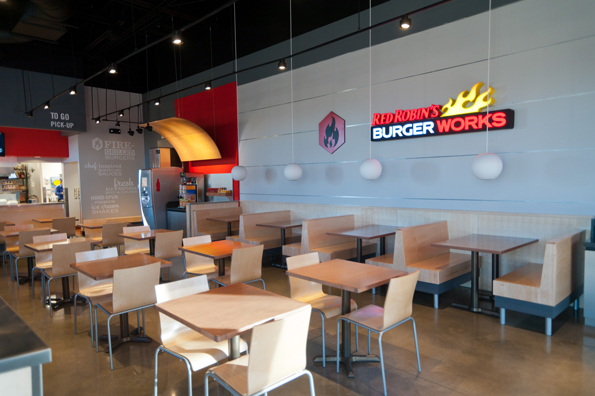
Which ‘Wich is also testing a smaller prototype unit — as tiny as 300 square feet — with sights set on urban areas like Chicago and New York. Typical Which ‘Wich units are about 1,600 square feet.
Mike Nolan, executive vice president and chief development officer for the 170-unit Corner Bakery Cafe, said the Dallas-based bakery-cafe brand got its start in a small-footprint retail location attached to Maggiano’s Little Italy in Chicago in 1991. As the chain grew, so did its restaurants. Corner Bakery units today are typically 3,800 to 4,000 square feet.
Now the chain is returning to its roots as it grows company stores in urban areas like Chicago, Dallas, Los Angeles and the District of Columbia, Nolan said.
“We’re developing a smaller prototype that can go into urban residential markets where space is at a premium,” he said. “Our mission is to have a prototype less than 3,000 square feet.”
It’s an opportunity for concepts like Corner Bakery that already do a brisk to-go business and fit the needs of breakfast- and lunch-eating office workers — not to mention the needs of developers, Nolan said.
“Chicago has little new development, but in urban markets like that, you’re seeing grocers going back in and redeveloping [retail] centers,” he said. “There’s a much stronger focus on fast casual rather than fast food.”
Mild weather: Phoenix

(Continued from page 4)
After two severe winters in which snow, ice and frigid temperatures took a serious toll on restaurant sales, some chains are looking for opportunities in sunnier climes.
The Denver-based Tokyo Joe’s chain in June opened its first unit outside Colorado in Phoenix, and another four units are planned for the market this year.
Greg MacDonald, CEO of the 29-unit fast-casual Asian chain, said the company looks at a number of factors in choosing markets, but an important factor this year was weather.
“Good weather is a big one,” he said. “Arizona has consistently good weather.”
Phoenix was hit hard during the recession, but in recent years the economy has been recovering nicely, he added.
“Phoenix is on the rise. The economy is going the right way.”

With the more affluent Scottsdale, Ariz., nearby and relatively affordable real estate, Phoenix has become a hot spot for chains early in their development, said David Bloom, chief operating officer of Broomfield, Colo.-based Famous Brands International, parent to the TCBY frozen yogurt and Mrs. Fields cookie chains.
The 650-unit TCBY and 300-unit Mrs. Fields are well-established, but Famous Brands is planning to open a new dual-branded concept there offering both the frozen yogurt and the full baked goods line. Fifty of the dual-branded locations are planned for the Phoenix market over the next five years.
Currently, Phoenix has two freestanding TCBY units and seven nontraditional units in the Arizona Diamondbacks’ stadium, along with one Mrs. Fields, so the individual brands are known, Bloom said.
The hot weather is good for frozen yogurt sales, he added. With the new dual-branded locations, cookies will balance out sales when temperatures drop.
The dual-branded units have been in test in various locations over the past year. They will include a full bakery, seven frozen yogurt machines, a coffee program and an e-gifting center, where guests can purchase products for shipping or customized orders.
In tests, the new format has shown to generate about double the revenue of individual-brand stores. The dual format will also grow in other cities this year, but Phoenix is an ideal location to get the concept growing, Bloom said.
“We think it’s a market on the upswing,” he explained. “It’s affluent, there’s good available and affordable real estate, and the weather fits our brand.”
Population growth: Dallas/Fort Worth
(Continued from page 5)
When assessing markets for restaurant chain growth, one factor that every restaurant chain loves is population growth.
“Markets like Dallas and Houston are growing like crazy. And where you have growth, you have more opportunity,” Buxton’s Stinneford said.

Between 2000 and 2012, Dallas/Fort Worth/Arlington was one of the fastest growing metropolitan areas, increasing in population by nearly 30 percent to 6.7 million — more than the entire population of North Dakota, Wyoming, Montana, Idaho, Vermont, Maine and Alaska combined, according to U.S. Census Bureau estimates.
By 2018, the population of the Dallas/Fort Worth area is projected to grow more than 5 percent, according to Buxton.
The greater Dallas area is projected to see job growth of 3 percent this year and 2.9 percent in 2015, after growing 2.7 percent in 2013, according to a recent report by the U.S. Conference of Mayors.
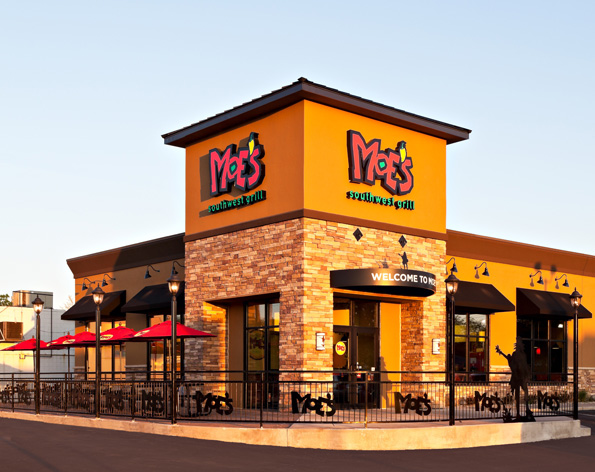
The 551-unit Moe’s Southwest Grill, for example, has its sights set on the Dallas market as the key to unlocking the rest of the state.
Moe’s has signed franchise agreements for 34 units in Dallas, with two already open and three or four more expected this year.
The chain has also signed another 15 units for the Houston area, and the next step is to find sites in west Texas, said Steve Corp, vice president of franchise sales at Moe’s.
“We’re at the point where we’re moving on to big markets to the west, like Dallas and Chicago,” Corp said. “Dallas has money. It’s [affluent]. Dallas is a big family market, and for us, that fits well.”
Kyle Kavanaugh, president of commercial real estate firm Main & Main Inc., based in Los Angeles, said many restaurant chains look to Dallas as a place to test their brand for larger markets.
“They say if it plays in Dallas, it plays anywhere,” Kavanaugh said.
Contact Lisa Jennings at [email protected].
Follow her on Twitter: @livetodineout

